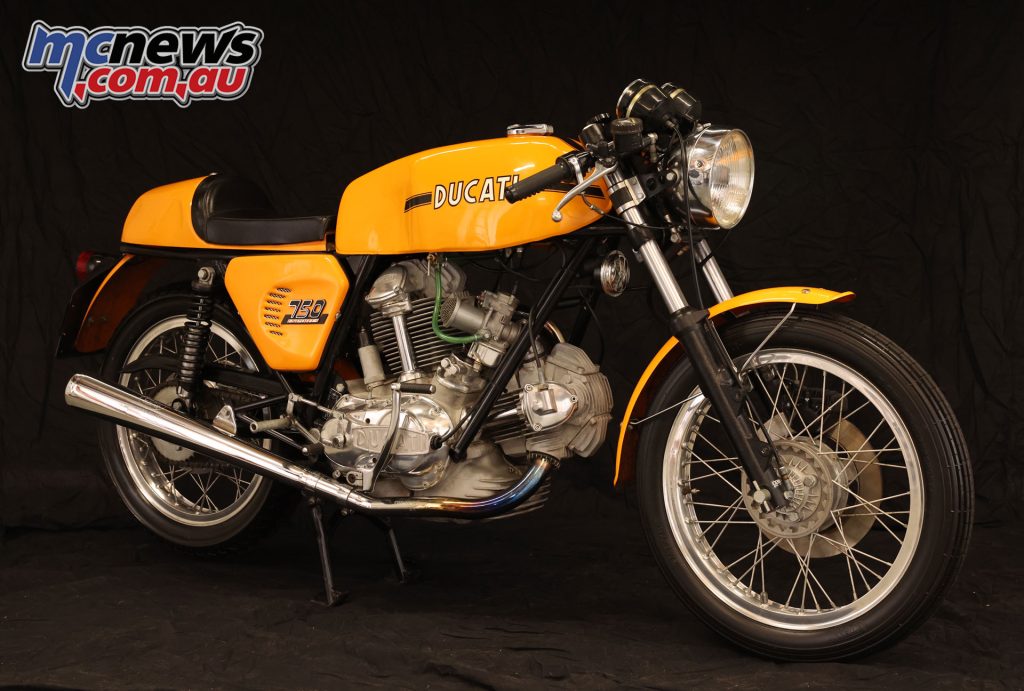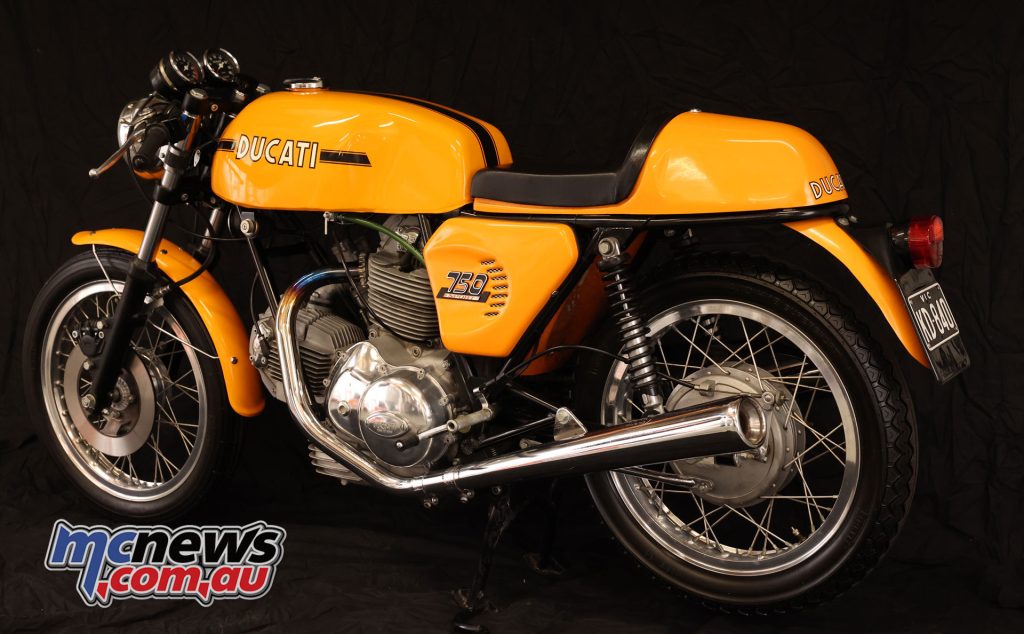Ducati 750 Sport
With Ian Falloon
Back in the 1960s and early 1970s café racers were for those who wanted to ride fast short duration bursts to the next café. It began as a British phenomenon; café racers mimicking real road racers and, but for some smaller capacity factory bikes like the Ducati 250 Mach 1, they were generally homebuilt specials.
The most popular café racers of the 1960s were Tritons, pre-unit Triumph engines in a Norton Featherbed frame. By the 1970s the Japanese were already winning on the track but had yet to embrace the production café racer, so if you wanted clip-on handlebars and rear-set footpegs, the choice was pretty limited.

Only Norton, Ducati, and a couple of other Italian manufacturers offered large displacement café racers. The Norton was the limited edition Production Racer, and the other Italian café racers the virtually unobtainable MV Agusta 750 S and Laverda 750 SFC.
In 1972 and 1973 the Ducati 750 Sport was the only readily available large displacement factory café racer, and the epitome of functional minimalism. This was more than a year before the emergence of the Desmodromic 750 Super Sport, and for a street racer set-up, the Sport was the best.

Long, low and narrow, the 750 Sport was the antithesis of a modern sports bike. The rider moulded into it rather than perched on top, with the front wheel seemingly extending far out in front. Although it grew out of the very similar 750 GT, the Sport was considerably narrower, and its sense of purpose saw it unadorned with superfluous paraphernalia.
As it was intended for pure sporting use, turn signal indicators and air filters were noticeably absent, instrumentation and switches were minimal, and all the bodywork was fibreglass. While the distinctive yellow fibreglass was of dubious quality, it contributed to a significant weight reduction.

The 750 GT was already considered one of the best handling motorcycles available, but the Sport was better. The low handlebars placed more weight on the front wheel, at 185 kilograms it was lighter, and as a passenger upset the power to weight ratio only a solo seat was offered.
Compared to other large capacity motorcycles, 750 Ducatis with their distinctive leading-axle Marzocchi front fork had a longer wheelbase 1,530mm, a lazy 29-degree steering head angle, and a low centre of gravity. This provided exceptionally high-speed stability, but at the expense of manoeuvrability. And while there were only a few engine updates; the Sport was a much faster motorcycle than its 750 GT sibling.

It is difficult to imagine how by simply changing the carburettor size and compression ratio, the characteristics of the engine could be so transformed. Because tiny 30mm Amal carburettors, and restrictive air cleaners strangled the engine, the 750 GT was a sedate performer.
Along with low compression pistons the GT was no match for a Norton Commando let alone a Kawasaki Z1. But with lighter 9.5:1 pistons, and the new Dell’Orto 32 mm “pumper” carburettors with velocity stacks, the 750 Sport was suddenly a Superbike. And the 90-degree twin cylinder layout ensured the 750 Sport remained vibration free right up to its 7500 rpm redline.

A pair of barking Conti mufflers did little to quell the noise and certainly announced the Sport’s arrival. The only real weak points were the single Scarab disc brake, the harsh Marzocchi shock absorbers, and a propensity for the kickstart to fly off while riding along. The Scarab disc was effective enough, but lacked the ultimate power of a dual disc set-up, while the Marzocchis were typically oversprung and underdamped.

When the Desmodromic Super Sport appeared during 1974 the 750 Sport took a back seat. While retaining the roaring Contis and unfiltered carbs, a steel petrol tank replaced the fibreglass, a dual seat became an option, polished alloy supplanted the black engine cases, and a centre axle Ceriani or Marzocchi fork was introduced to reduce the lanky wheelbase slightly.
With the Ceriani came an improved Brembo front disc brake. New handlebar and ignition switches displayed Ducati’s abject failure to grasp ergonomics, but the most unusual feature was a dual tone (Town and Country) horn that couldn’t be heard over the sound of the Conti exhausts anyway. Fortunately, the Sport’s soul and essence remained, and the 750 Sport, in any incarnation, is the definitive 1970s factory café racer.

Ducati 750 Sport Specifications
| Ducati 750 Sport Specifications | |
| Engine | Four stroke, 90 degrees L twin cylinder, 2 valves per cylinder, bevel gear driven SOHC Capacity: 748 cc |
| Bore x Stroke | 80 x 74.4 mm |
| Compression Ratio | 9.5:1 |
| Induction | Dual Dell’Orto PHF 32A carburettors |
| Cooling System | Air cooled |
| Ignition | Points and coil |
| Starting | Kick |
| Clutch | Wet, multiplate |
| Transmission | Five Speed |
| Final Drive | Chain |
| Frame | Tubular steel, twin downtube |
| Front Suspension | Marzocchi or Ceriani 38mm telescopic fork |
| Rear Suspension | Dual shocks, Marzocchi 305 mm, 3-way adjustable |
| Front Brakes | Single 280 mm disc, Brembo or Scarab caliper |
| Rear Brakes | 200 mm Drum |
| Front Tyre | 3.25 – 19 |
| Rear Tyre | 3.50 – 18 or 4.10 – 18 |
| Dimensions | Length 2200 mm, Width 710 mm, Height 1070 mm |
| Wheelbase | 1530 mm |
| Seat Height | 780 mm |
| Dry Weight | 185 kg |
| Fuel Capacity | 17 Litres |
| Top Speed | 210 km/h |























